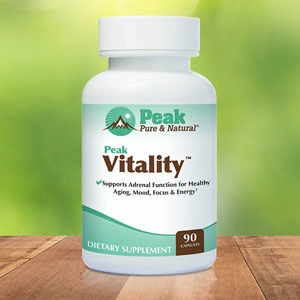Get Easy Health Digest™ in your inbox and don’t miss a thing when you subscribe today. Plus, get the free bonus report, Mother Nature’s Tips, Tricks and Remedies for Cholesterol, Blood Pressure & Blood Sugar as my way of saying welcome to the community!
The scientific reasons weighted blankets ease anxiety, improve sleep and help you feel hugged

You probably remember Linus, the philosophical, constantly anxious, blanket-toting boy from the comic strip “Peanuts.”
Linus has been known to have a meltdown if someone touches his blanket.
Seems funny, right? But how many of us depended upon just such a blanket when we were children, or have kids and grandkids of our own now who wouldn’t be caught without that worn piece of cloth in their arms?
Well, it turns out that Linus was on to something.
There’s a therapeutic blanket that’s gaining in popularity today that takes “security blanket” to a whole new level.
Research has shown it’s good for relieving anxiety and insomnia, and for helping adults as well as children.
If this sounds like something you’d like to try, read on.
Weighted blankets: like a giant hug to calm and relax
Whenever I get dental x-rays, I actually look forward to wearing that heavy apron that protects me from radiation. It makes me feel calm and secure.
Unknowingly I was being comforted by deep pressure therapy or DPT. And it’s what makes a weighted blanket work to alleviate feelings of anxiety and depression, as well as to ease insomnia.
Weighted blankets have long been used by occupational therapists as part of a treatment known as sensory integration therapy.
Particularly in people with autism, the deep pressure helps them regulate their feelings of stress and anxiety, and helps them become more comfortable with physical contact.
Makes sense, really, since we are conditioned almost from birth to feel calm and relaxed when being held or hugged securely.
But there’s brain chemistry at work here, too…
Deep pressure therapy stimulates the release of serotonin and dopamine, two “feel-good” neurotransmitters that help relax the body.
Some research shows that deep pressure also releases oxytocin, a brain chemical that helps regulate fear, aggression, and stress.
And, many studies have indicated that deep pressure decreases the brain’s production of the stress hormone cortisol.
Elevated cortisol levels that stay high due to constant stress are known to lead to anxiety, depression, weight gain, and insomnia.
“Grounding” the body to help insomnia
Occupational therapists use weighted blankets with children who have a sensory processing disorder. These children become easily overwhelmed by the sights, sounds, smells and other stimuli that most people can handle without distress.
A weighted blanket seems to help the child’s brain “untangle” all that input, making it feel like less of an assault on their brain.
This same concept could be why so many people, especially adults, have found relief from insomnia by using a weighted blanket. As mentioned, the weight of the blanket shuts down excessive cortisol levels, allowing the body to relax.
Dr. Raj Dasgupta, assistant professor of clinical medicine at the University of Southern California, says that a weighted blanket could be ”a good alternative to life-long sedative-hypnotic medications (sleeping pills) at night.”
But he is also quick to mention that “you also have to pay attention to the foundation of good sleep hygiene.”
This means limiting or eliminating light in your bedroom, especially from electronic devices, and eating the right foods and avoiding the wrong ones before bedtime.
So, if you’re thinking a weighted blanket is sounding pretty good, here are the basics.
What to look for
A good rule of thumb is to choose a weighted blanket that is ten percent of your body weight, plus an additional pound or two. So, if you weigh 150 pounds, a 16- or 17-pound blanket is just right.
Blanket manufacturers will recommend ideal total weights, and you should pay attention to these guidelines. You’ll want a more lightweight blanket if you plan on using it with another comforter.
Weighted blankets may be filled with pellets, beads, discs or seeds, like flaxseeds. For a more traditional feel, look for a blanket that combines these with a softer material like cotton.
Sources:
- Everything You Need to Know Before Buying a Weighted Blanket — Forbes
- Weighted Blanket for Anxiety: The Latest Tool to Relieve Worry — University Health News
- The biologic effects of grounding the human body during sleep as measured by cortisol levels and subjective reporting of sleep, pain, and stress — Journal of Alternative and Complementary Medicine
- Weighted Blankets: How They Work — Live Science
- Physiological Effects of Deep Touch Pressure on Anxiety Alleviation: The Weighted Blanket Approach — Journal of Medical and Biological Engineering
- Do weighted blankets work for anxiety? — Medical News Today














